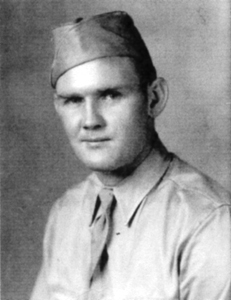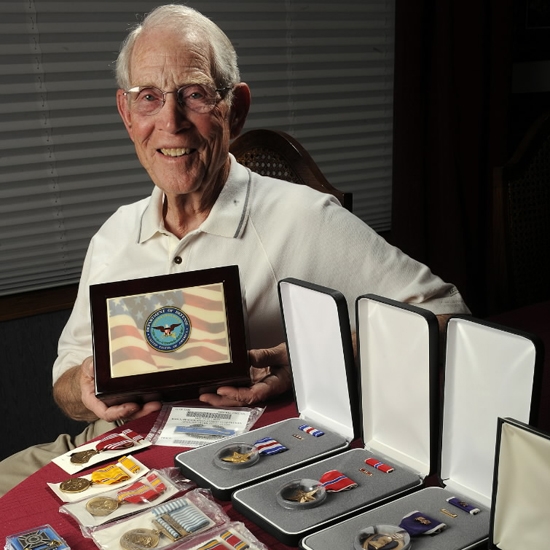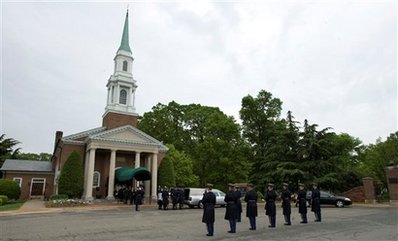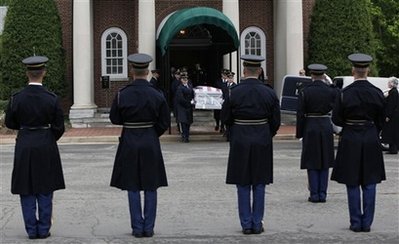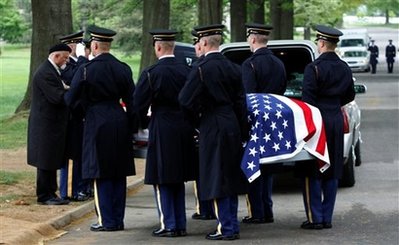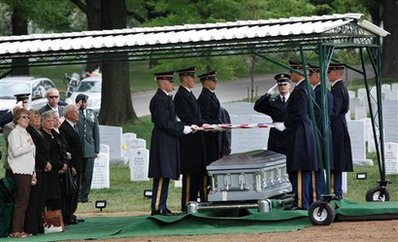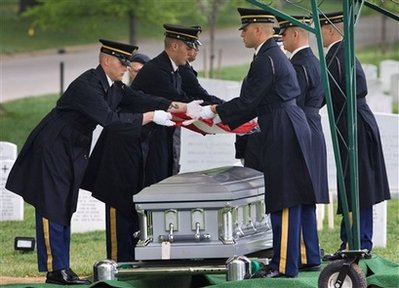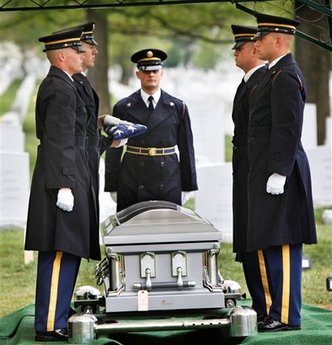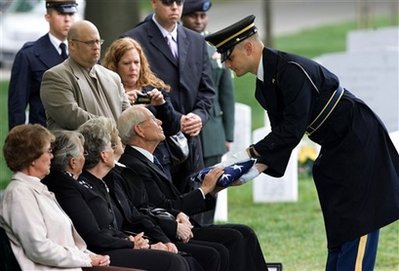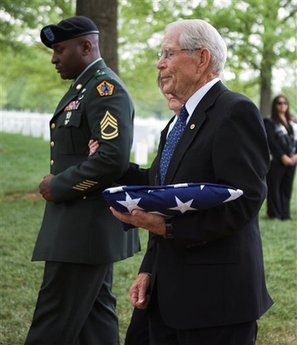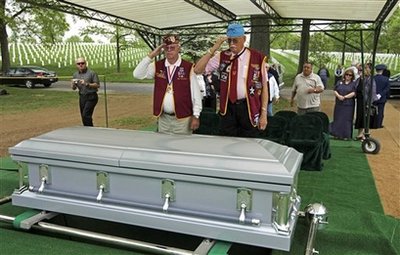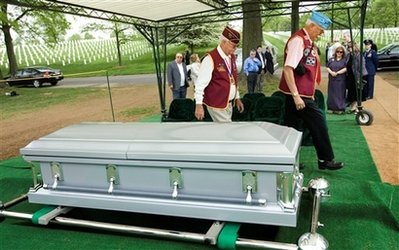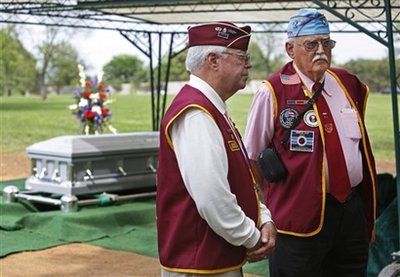Patrick James Arthur
Broken Bow, Nebraska
Born 1914
Sergeant First Class, U.S. Army
Service Number 37034440
Died while Prisoner of War
Died July 31, 1951 in Korea
Sergeant First Class Arthur was a veteran of World War II. In Korea, he was a member of Headquarters Company, 2nd Battalion, 38th Infantry Regiment, 2nd Infantry Division. He was seriously wounded in North Korea on November 30, 1950 and returned to duty on December 7, 1950.
He was taken Prisoner of War while fighting the enemy in South Korea on May 18, 1951 and died while a prisoner on July 31, 1951. His remains were not recovered.
His name is inscribed on the Courts of the Missing at the Honolulu Memorial. For his leadership and valor, Sergeant First Class Arthur was awarded the Silver Star, the Bronze Star, the Purple Heart with 2 Oak Leaf Clusters, the Combat Infantryman’s Badge, the Prisoner of War Medal, the Korean Service Medal, the United Nations Service Medal, the National Defense Service Medal, the Korean Presidential Unit Citation, the Republic of Korea War Service Medal and the World War II Victory Medal.
U.S. Department of Defense
Office of the Assistant Secretary of Defense (Public Affairs)
News Release
IMMEDIATE RELEASE No. 170-09
Soldier Missing From Korean War Is Identified
The Department of Defense POW/Missing Personnel Office announced today that the remains of a U.S. serviceman, missing from the Korean War, have been identified and will be returned to his family for burial with full military honors.
He is Sergeant First Class Patrick J. Arthur, U.S. Army, of Broken Bow, Nebraska. He will be buried on May 1, 2009, in Arlington National Cemetery near Washington, D.C.
Representatives from the Army’s Mortuary Office met with Arthur’s next-of-kin to explain the recovery and identification process on behalf of the secretary of the Army.
Arthur was a member of Headquarters Company, 2nd Battalion, 38th Regiment, 2nd Infantry Division. In mid May 1951, elements of the 2nd ID were securing their positions on the No Name Line south of the Soyang River, South Korea, when the Chinese Army launched a major counter-offensive. The 2nd ID was forced to withdraw south to a more defensible position north and east of the Hongch’on River. During the withdrawal, Arthur was captured by enemy forces on May 18, 1951, and was marched north into North Korea. Arthur died of malnutrition and disease in July, and he was buried at the Suan Mining POW Camp near Pyongyang.
Between 1991-94, North Korea gave the United States 208 boxes of remains believed to contain the remains of 200-400 U.S. servicemen. Accompanying some of the remains were Arthur’s military identification tag and a denture fragment bearing his name.
Among other forensic identification tools and circumstantial evidence, scientists from the Joint POW/MIA Accounting Command and the Armed Forces DNA Identification Laboratory also used mitochondrial DNA and dental comparisons in identifying some of the remains as Arthur’s.
Remains of Broken Bow Korean War Soldier identified
Courtesy of the Custer County Chief, Broken Bow, Nebraska
Military announcements peppered the front page of the Custer County Chief in the 1940s and 1950s, noting the men who had enlisted, trained, fought and returned home during World War II and the Korean War.
Not all the men returned home, however, and an occasional headline shared the solemn news.
“Pat Arthur Missing In Korea” read the headline at the top left the Chief’s June 18, 1951 front page.
The Department of Defense announced Monday that Sergeant First Class Patrick J. Arthur’s remains had been identified and will be returned to his family for burial with full military honors.
He will be buried May 1, 2009, in Arlington National Cemetery near Washington, D.C.
Two of the former prisoners of war who helped bury Arthur in Korea will attend the ceremony, according to Arthur’s niece, Kay Einspahr.
“It’s really quite a story,” Einspahr said. “Two POWs who were with him, who buried my uncle on what they called the March of Death, are in their 80s and they will be there.”
Einspahr said the half-dozen family members who will attend the ceremony hope to have time to visit with Arthur’s fellow soldiers.
According to the 1951 article in the Chief, Arthur’s sister, Mrs. Alice Trotter, received a telegram in mid-June 1951 that Sergeant Arthur was missing in Korea.
Trotter was Kay Einspahr’s mother.
The article said two of Arthur’s brothers, James, Sr., and Thomas, also lived in Broken Bow at that time. He was the son of the late Gus Arthur.
The Department of Defense reports Arthur was a member of Headquarters Company, 2nd Battalion, 38th Regiment, 2nd Infantry Division.
In mid May 1951, elements of the 2nd Infantry Division were securing their positions on the No Name Line south of the Soyang River, South Korea, when the Chinese Army launched a major counter-offensive.
The 2nd ID was forced to withdraw south to a more defensible position north and east of the Hongch’on River.
During the withdrawal, Arthur was captured by enemy forces on May 18, 1951, and was marched north into North Korea.
The family later learned that Arthur died of malnutrition and disease in July, and he was buried at the Suan Mining POW Camp near Pyongyang.
According to the Department of Defense, between 1991-94, North Korea gave the United States 208 boxes of remains believed to contain the remains of 200-400 U.S.servicemen.
Accompanying some of the remains were Arthur’s military identification tag and a denture fragment bearing his name.
Among other forensic identification tools and circumstantial evidence, scientists from the Joint POW/MIA Accounting Command and the Armed Forces DNA Identification Laboratory also used mitochondrial DNA and dental comparisons in identifying some of the remains as Arthur’s.
Einspahr said her mother and her mother’s sister, Jane, each provided DNA to the Department of Defense before they died.
Her mother died five years ago, Einspahr said.
“My mother pursued this for a long time,” Einspahr said. “The military has kept us informed along the way.”
Arthur was on furlough in Broken Bow in June 1950 when he received notice to report to Fort Lewis, Washington because of the Korean conflict, according to the Chief.
He was wounded in Korea in November 1950, suffering wounds to his feet and legs, but returned to duty three weeks later.
He was promoted from Corporal to Sergeant while in Korea, was a squad leader and led a group of Korean soldiers.
The Korean tour was Arthur’s fourth overseas assignment, the Chief article states.
He served in Guadalcanal and Germany in World War II, and served in Germany again after the war. He earned the Silver Star for gallantry on Guadalcanal.
A vow between brothers for a fallen friend
Two Army sergeants dug a grave for their friend 57 years ago on an unmarked spot in North Korea.
It was the only gesture their Chinese captors allowed them to bestow on Sergeant Patrick James Arthur of Broken Bow, a man they called Pop because, at 36, he was an old soldier.
Pop Arthur would forever be 36 after malaria, malnutrition and a torturous, 500-mile march through the mountains of central Korea ended his life. Sergeant Obie Wickersham and Sergeant Fred Liddell made the same march after Chinese soldiers captured them on May 18, 1951.
Francis Arthur displays his Uncle Patrick James Arthur’s medals and commendations on March 16 as well as
the box in which he was presented the dog tag recovered with his uncle’s remains in North Korea
They knew Pop was extremely sick when they arrived at the prison camp, so they asked guards if they could clean him up, give him some water. The guards said he would be taken to the hospital. Instead, they just let him die — filthy and thirsty.
“They wouldn’t let us do a damn thing,” Liddell said.
Except bury their friend.
They carried Pop to a suitable place and started digging. When he wasn’t being watched, Liddell removed the dog tags. He pocketed one; he hid the other in Pop’s mouth.
The guards told them to stop digging before the grave was more than a couple of feet deep. And when they tried to say a few words for their friend, they were ordered to shovel dirt over the body.
So they spoke to each other instead.
They made a vow.
Between 1991 and 1994, the North Korean government gave the United States 208 boxes of burial remains from 200 to 400 American servicemen who died in the Korean War.
Scientists from the Joint POW/MIA Accounting Command and the Armed Forces DNA Identification Laboratory are responsible for trying to identify the remains and returning them to next of kin.
In one of the boxes, they uncovered Sergeant Arthur’s dog tag. Over time, investigators used DNA profiling to identify his partial skeletal remains and, late last year, they notified his 81-year-old nephew, Francis Arthur, who lives in Lincoln.
One of the first questions Francis Arthur had for the military representatives who came to his house:
Can you notify Obie Wickersham and Fred Liddell?
The three sergeants became co-workers and friends when they were assigned to Headquarters Company, 2nd Battalion, 38th Regiment of the 2nd Infantry Division.
Pop, the former Custer County farm boy, had served throughout World War II, in the Pacific and in Europe. He won the Silver Star, the military’s third highest decoration, during the Battle of Guadalcanal. Details are sketchy, but relatives say it apparently involved a mad dash to recover a machine gun, which he turned on advancing Japanese soldiers. He was wounded twice in the war.
Platoon Sergeant Obie Wickersham from California could relate. He too served in the Big War, won the Silver Star and earned Purple Hearts.
Communications Sergeant Fred Liddell of Oregon served his first hitch in the Army as part of the occupational forces in Japan. He re-enlisted in early 1950 after being promised he’d get a year stateside and a year abroad in a location of his choice.
Instead, when war broke out in June 1950, he was sent to Korea.
Some of the bloodiest fighting of the war took place in the first year, involving United Nations troops, Americans, South Koreans, North Koreans and Chinese.
In mid-May 1951, troops in the 2nd Infantry Division dug in for battle along the No Name Line near the Soyang River in South Korea. The Chinese Army launched a counter-offensive May 17, severely outnumbering the Americans.
“We were absolutely overrun,” Wickersham said. “There wasn’t much we could do about it.”
He and Arthur were together when they were captured.
In a different location, Liddell was part of an infantry company marching up a hill as Dutch soldiers ran down, saying, “Too many Chinese, too many Chinese.” The Americans learned the Dutch were telling the truth. Then friendly rockets started pounding the hill.
A Captain ordered Liddell and several other soldiers to return to headquarters camp, thinking it would be safe. When they arrived, they walked into a hut where at least 30 Americans lay wounded. That’s when the Chinese soldiers swarmed the camp.
“They came in, took those of us who could walk out and then burned the hut down,” Liddell said. “They threw in grenades and burned it down.”
The long march started May 18 with about 500 men.
The guards forced them over mountains at night and made them hide in the trees during the day.
The prisoners consisted of troops from the U.N. and the 2nd Infantry Division. Republic of South Korea soldiers were quickly executed.
For days, they were given nothing to eat and only one cupful of water per day. They ate leaves, grass, insects — anything that looked edible.
When their captors finally started distributing food, it typically was a handful of milled grain or flour. When prisoners passed streams or rivers, those who broke ranks for a drink were shot.
Dysentery spread like fire in a pile of straw. Lice infected almost everyone. Men started collapsing from dehydration and starvation.
“If somebody dropped out, maybe you’d hear a shot, maybe you wouldn’t,” Liddell said.
Pop Arthur, suffering from a relapse of malaria he caught during World War II, grew weaker each day. Liddell and Wickersham stayed with him.
About two days before their arrival at the Suan prisoner camp south of Pyongyang, Pop couldn’t walk anymore. His friends were so weak they could offer little help. A soldier named Earl Harman put Pop on his back, carrying him the rest of the way.
They arrived at the prison camp at the end of July. The march had taken more than two months.
Of the 500 men who started, only 200 finished, Wickersham said.
Wickersham and Liddell stayed together during their imprisonment. They were released together on August 23, 1953, about 2 1/2 years after their capture.
They were among the 1.8 million who served in the Korean War theater. The war took the lives of nearly 37,000 Americans.
They returned home and led productive lives. Wickersham, now 84, lives in Yuba City, California. Liddell, now 80, is in Opelika, Alabama. Both have been active in Korean War POW/MIA organizations, advocating for the return of some 8,000 unaccounted for brothers lost in what is often called the Forgotten War.
Over the years, they have prayed the remains of their friend would be found and returned. So they were deeply relieved when they learned of the events of recent months.
Both men will be at Arlington National Cemetery for the May 1, 2009, funeral of a man they called Pop.
“It means the world to me,” said Francis Arthur, the nephew in Lincoln who worked so hard to have his uncle’s remains identified. “Of all the people there, I feel personally it’s most important that they be there.”
The Army will honor Patrick Arthur on that day, as will his relatives.
Liddell and Wickersham already did 57 years ago.
So they will do something else on May 1. They will fulfill a promise they made in 1951 to someday rebury their friend in American soil.
“We vowed to be there,” Obie Wickersham said, “so we will be there.”
Long investigation brought Korean War POW to rest
“We underscore our commitment and pledge to those who are still missing in action and to their families that we will not rest until we have achieved the fullest possible accounting for every member of our Armed Forces missing in the line of duty.” — President George W. Bush on National POW/MIA Recognition Day, September 17, 2008.
Sergeant Patrick Arthur of Nebraska will at last come to rest today at Arlington National Cemetery.
The funeral for the Broken Bow native will fulfill the longings of Arthur’s relatives and two Army buddies, who were with him when he died nearly 58 years ago in a North Korean prisoner-of- war camp.
Today’s funeral also represents the culmination of a complex forensic investigation conducted by military scientists who work to identify remains of Americans recovered from the battlefield or prison camp.
The behind-the-scenes work by the Joint POW/MIA Accounting Command allows the nation to fulfill an obligation to those who gave their lives in its defense.
“You kind of make a promise to that individual to get him home,” said Fred Liddell of Opelika, Alabama, an Army veteran who helped bury Arthur in North Korea in 1951. “That’s a part of the military creed.”
While the identification of Sgt. Arthur is in most ways an individual story, it typifies the challenges that confront investigators trying to identify the thousands of Americans who died on prison marches or in POW camps in Korea.
The Korean War was waged from the summer of 1950 until the summer of 1953. Some 1.8 million Americans served in the war; 37,000 died and 8,100 are still missing.
Sgt. 1st Class Patrick Arthur served with the Army’s 2nd Infantry Division and was captured by the Chinese Army on May 18, 1951. He and hundreds of other soldiers were marched 500 miles to a prison camp southeast of Pyongyang, where he died of malnutrition and disease and was buried by his fellow prisoners.
America began bringing home its dead sons from Korea as part of the prisoner exchange at the end of the war. Little happened for more than three decades until, starting in 1991, the North Korean government returned 208 boxes of remains to the U.S.
Sergeant Arthur’s remains were in those boxes.
But inadequate records provided by the North Koreans made it difficult for American investigators to match the remains with names. In addition, skeletons of several soldiers were mingled together and investigators think as many as 400 soldiers are actually represented in the boxes, said Larry Greer, a spokesman for the Pentagon’s POW/MIA Office.
The U.S. government asked the North Koreans to stop sending boxes in 1994. In 1996, American anthropologists started conducting excavations overseas to improve identification. The field work ended in 2005 when political tensions heightened between the two countries, but not before 229 additional Americans were recovered.
Meanwhile, investigators working on the 1991-94 boxes found a dog tag with Arthur’s name. They also found a denture fragment inscribed with his name and ID number.
Forensic anthropologists, by looking at bones associated with the dog tag, determined they belonged to a Caucasian male older than 22. They also estimated his height at 66.6 inches.
When they checked Sergeant Arthur’s medical records, they learned he was 36 when he died and stood 5-foot-7, or 67 inches. The records also contained dental information that helped support a positive identification.
They also knew, from soldiers who survived the march and two years of imprisonment, where Arthur died. The information matched his service records and the location of the recovery.
To sort out which skeletal remains were Arthur’s, the scientists used mitochondrial DNA tests. But to conduct a comparison, they needed DNA samples from Arthur’s maternal relatives.
Those samples were given by Arthur’s two surviving sisters several years ago. But the comparison work took years to complete and the sisters have since died.
“It just doesn’t happen as quickly as it does on ‘CSI Miami,’” Greer said.
Late last year, Sergeant Arthur’s partial skeleton was ready to be returned to his primary next-of-kin, Francis Arthur, an 81-year-old nephew who lives in Lincoln.
The case illustrates how military investigators use multiple sources of information to confirm an identity, Greer said.
“Mitochondrial DNA is not a standalone piece of evidence, but one of several,” he said.
The Arthur family is fortunate to get closure, even if it has come nearly six decades after their loved one’s death. Only 24 soldiers have been identified out of the 208 boxes of remains returned in the early 1990s, Greer said.
Since 1982, the POW/MIA Accounting Command has identified 100 soldiers from the Korean War. It currently has possession of 1,300 Korean War remains it is actively working to identify.
Officials have secured DNA samples from relatives of about 65 percent of the missing soldiers.
About 600 staff work for the POW/Missing Personnel Office command, which includes labs in Hawaii and Maryland. The agency receives an annual budget of about $105 million.
The work is daunting, Greer said, but highly necessary.
“It’s a promise this military, this department, this government has made to the missing serviceman.”
Honor guards salute as the flag-draped coffin of Army Sergeant First Class Patrick J. Arthur of Broken Bow, Nebraska
is carried out of a chapel during his funeral ceremony at Arlington National Cemetery, Friday, May 1, 2009
Honor guards salute as the flag-draped coffin of Army Sergeant First Class Patrick J. Arthur of Broken Bow, Nebraska
is carried out of a chapel during his funeral ceremony at Arlington National Cemetery, Friday, May 1, 2009
Army honor guards carry the flag-draped coffin of Army Sergeant First Class Patrick J. Arthur of Broken Bow, Nebraska,
during his funeral ceremony at Arlington National Cemetery, Friday, May 1, 2009
Francis Arthur, fifth from left, nephew of Army Sergeant First Class Patrick J. Arthur of Broken Bow, Nebraska leads
relatives and friends as they pay their last respects during the funeral ceremony at Arlington National Cemetery, Friday, May 1, 2009
Members of the honor guard fold the American flag that draped the coffin of Army Sergeant First Class Patrick J. Arthur
of Broken Bow, Nebraska, during his funeral ceremony at Arlington National Cemetery, Friday, May 1, 2009
Honor guards hold the American flag that draped the coffin of Army Sergeant First Class Patrick J. Arthur of
Broken Bow, Nebraska, during his burial at Arlington National Cemetery, Friday, May 1, 2009
Francis Arthur, seated fifth from left, nephew of Army Sergeant First Class Patrick J. Arthur of Broken Bow, Nebraska
receives the folded flag that draped his uncle’s coffin during the funeral ceremony at Arlington National Cemetery, Friday, May 1, 2009
Francis Arthur, nephew of Army Sergeant First Class Patrick J. Arthur of Broken Bow, Nebraska, carry the folded
flag that draped his uncle’s coffin during the funeral ceremony at Arlington National Cemetery, Friday, May 1, 2009
Sergeant Obie Wickersham, left, 84, of Yuba City, California, and Sergeant Fred Liddell, right, 80, of Opelika, Alabama, give
their final salute to their friend, Army Sgt. First Class Patrick J. Arthur of Broken Bow, Nebraska, at Arlington National Cemetery, Friday, May 1, 2009,
Sergeant Obie Wickersham, left, 84, of Yuba City, California, and Sergeant Fred Liddell, right, 80, of Opelika,
Alabama, leave after giving their final respects to their friend Army Sergeant First Class Patrick J. Arthur of Broken Bow,
Nebraska, during a funeral ceremony at Arlington National Cemetery, Friday, May 1, 2009
Sergeant Obie Wickersham, left, 84, of Yuba City, California, and and Sergeant Fred Liddell, right, 80, of Opelika, Alabama,
leave after giving their final respect to their friend, Army Sergeant First Class Patrick J. Arthur of Broken Bow, Nebraska,
during a funeral ceremony at Arlington National Cemetery, Friday, May 1, 2009, fulfilling their promise they made 57 years
ago when they buried him on an unmarked spot in North Korea. It was the only gesture their Chinese captors allowed them to
bestow on Sergeant Arthur who died while a prisoner of war, from malaria, malnutrition and the 500-mile march through the mountains
of central Korea during the Korean War.
Michael Robert Patterson was born in Arlington and is the son of a former officer of the US Army. So it was no wonder that sooner or later his interests drew him to American history and especially to American military history. Many of his articles can be found on renowned portals like the New York Times, Washingtonpost or Wikipedia.
Reviewed by: Michael Howard

